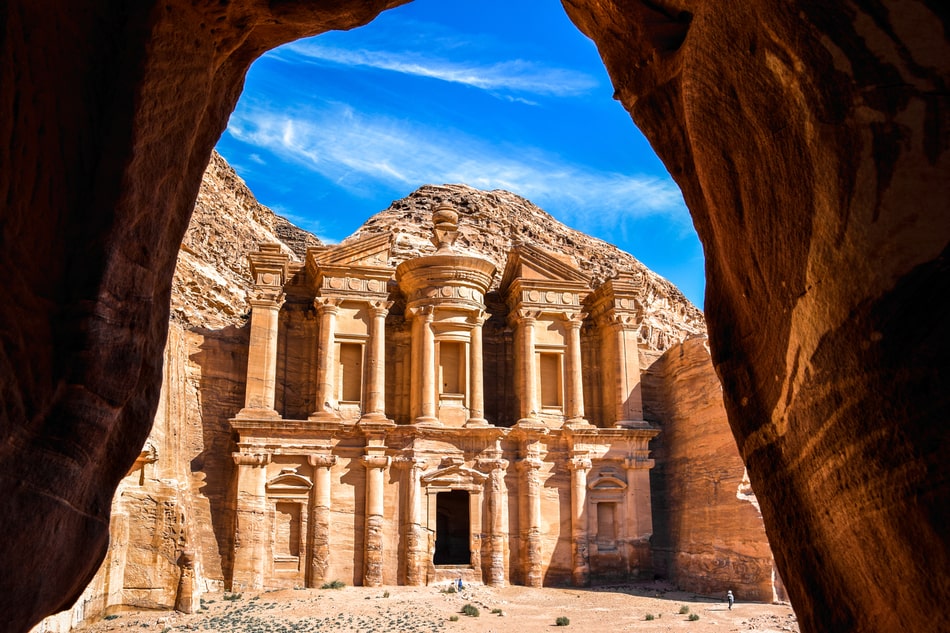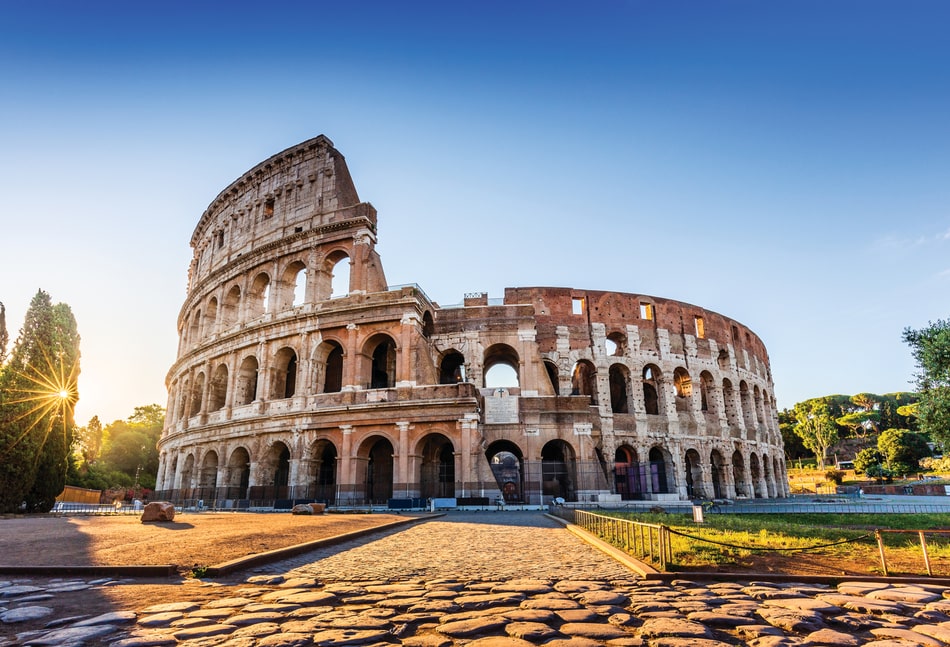The world is occupied with unique creations that are both natural and man-made. With many mind-blowing artificial structures, only seven have been selected, considered the best. These 7 Wonders of the World have stood firm against the test of time, continuously leaving many awestruck with their finesse.
If you’re reading this article, you must have a list of destinations around the world that you can’t wait to visit, as do we. The New 7 Wonders of the World are at the top of our list.
Adventurous Hellenic travelers made the original list of the 7 Man-Made Wonders of the World. This was more than 2000 years ago; therefore, most constructions have been destroyed. This led to the generation of a new set of 7 Modern Wonders of the World, which happened in 2007. An online test was put on by a Swiss company asking the members of the public to cast their votes. With over ten million votes, only seven sites emerged as the most visited tourist attractions worldwide. The sites include the Great Wall of China, Chichén Itzá, Taj Mahal, Colosseum, Petra, Machu Picchu, and Christ the Redeemer.
These awe-inspiring destinations, located on five different continents around the globe, are a must at least once in your life. We think it’s important to travel safely and comfortably. Travel insurance is an essential part of this in case of unforeseen health events and other events. That way, you can cross these destinations off your list with pleasure.
The following article will provide a short guide on where they are located, must-sees during your visit, and the best time of the year to visit to get the most out of your trip.
Index
Great Wall, China
The Great Wall is impressively a great site to make it to the top of the list. Deemed to be the longest wall in the world, it stretches from west to east in northern China. The Great Wall’s construction continued for two millennia, with more than 2,300 years of history. The wall’s main purpose was to protect and mark the territories of the Chinese empires and states. Its design features two parallel lengthy stretched walls adding up to 21,196.18 km. The walls had barracks dot the bulwark and watchtowers, which failed to provide security and served more as political propaganda. Though it failed to accomplish its purpose, it bears the title of a world wonder because of its magnificence.
Wandering a must-see site when visiting the Great Wall, Simatai, a section of the wall should be your first stop. There is a large screen wall made of 15 square bricks carved with a mysterious, eye-catching animal from Chinese mythology called Kirin (or Qilin). Over hundreds of years, the tower has been eroded, but you can still admire this preserved auspicious symbol. Its original appearance allows you to feel the historic atmosphere truly. Therefore, to see more of the untouched Great Wall, venturing further into the west will be more genuine.
If you’re in Beijing, accessing the Great Wall only requires you to take a day trip. There, the Chinese used their power to trivialize the entire thing by constructing a toboggan track downwards.
The best time to visit the Great Wall is usually determined by the urge to avoid crowds. Mutianyu Great Wall is less crowded and worth the extra time to get there. You can visit the wall in the spring or fall season and enjoy every bit of the experience.
Chichén Itzá, Mexico
Far in the Mexican state of the Yucatan peninsula lies one of the great archaeological sites, the Chichén Itzá. This monumental site of the Mayan civilization was built around 400 AD by a Mayan tribe called Itzá. The archaeology site totals a 1,000-year-old history. With its incredible features, it is among the greatest tourist attractions, awarded the title of the New 7 Wonders of the World. Among the features that help us understand the Mayan culture better include those wonderful sculptures and displays. The site involves a series of temples and monuments.
A must-see in Chichén Itzá is its centerpiece, El Castillo. This stepped pyramid rises 79 feet above the main square and consists of a total of 365 steps. The number of days is similar to a solar system. This feature contributes to the testament of the Mayans’ astronomical capabilities. The pyramid also appears like a serpent slithering down the north stairway when the sun sets, casting shadows during autumnal and spring equinoxes.
Apart from science and work, life in Chichén Itzá also involved sports, as tlachtli (sporting field) had its home there. The residents played a popular ritual game all through pre-Columbian Mesoamerica.
Additionally, the Temple of the Warrior, Wall of Skulls, El Caracol, and the Group of 1000 Columns are worth visiting. The cenotes and Mayan ruins in the Yucatan area will also give you a different view and taste of nature. Visiting almost all these places while in Chichén Itzá will be one of the best decisions ever. The cenotes will be the most beautiful experience on your visit. Make sure to visit at least one of them.
The best time of the year to visit Chichén Itzá is from November to March. The weather is favorable due to milder temperatures; thus, you can enjoy your adventure, making lifetime memories. Arrive early or late to avoid crowds.
Petra, Jordan
It is effortless to notice why Petra is among the New 7 Wonders of the World. Petra is half-built, half-carved into the rock, and is surrounded by mountains riddled with passages and gorges. It is situated between the Red Sea and the Dead Sea and has been inhabited since prehistoric times.
The Nabataeans made Petra their capital becoming the main trading center. The site was vast and designed in a detailed manner. The Nabataeans Arabs were the engineers when attending to the city features and carving. They designed features for tombs, statues, religious practice centers, homes, great halls, and passageways. Furthermore, they initiated a prosperous trade hub, earning huge wealth and expanding their population before earthquakes eliminated them. Before the abandonment of Petra, a population of 30,000 was reported. The city came to light in the late 20th century though ignorant archaeologists already rediscovered it in 1912.
Petra is a twisted treasure with many elements, including The Siq, The Treasury, The Monastery, the High Place of Sacrifice, and the Royal Tombs. When you visit the site, you will be amazed by its great history and amazing art.
Arriving early at the site saves you from big crowds. Avoid rainy days as the valley is prone to flooding. The best time to visit Jordan is during the spring and autumn months.
Taj Mahal, India
The Taj Mahal is considered to be the greatest architectural achievement in the whole range of Indo-Islamic architecture. The immense mausoleum of white marble was built in Agra between 1631 and 1648 on the bank of the Yamuna river. This monument, which is now the world’s most romantic building, is a love story that has made history. It is now among the 7 Man-Made Wonders of the World.
Its creation was inspired by the love Emperor Shah had for his wife. The Emperor wanted to honor his wife after she had passed giving birth to their 14th child. Besides housing her tomb, Emperor Shah ensured his tomb was also built there.
This tale of love is what everyone usually dreams about. Getting to see it in real life is another privilege. The Taj Mahal is a brilliant piece of Mughal architecture more than anything else. One of the most stunning monuments ever built. It was built entirely of semi-translucent white marble and took 22 years. Its design is covered in floral and geometric patterns having four domes surrounding the majestic central dome. Twenty thousand workers took part in constructing this masterpiece. You will see why it took this long when you notice the details of the marvelous, grand structure with awe.
The peak season for visiting the Taj is October to March, so try to avoid these months. Unfortunately, Agra does get smoggy, so winter can often have poor visibility earlier in the day and around sunset. Arrange your arrival to be at least 1 hour before sunrise. At this time, it will be easy to proceed with your planned activities, availed with the most favorable weather.
Machu Picchu, Peru
Machu Picchu is a 15th-century Inca citadel on a 2,430-meter (7,970 ft) mountain ridge. It is located in the Eastern Cordillera of southern Peru. This incredible display of human construction was created under the rule of Emperor Pachacuti in the 15th century. Archaeologists believe that in 1450, Machu Picchu was an estate for the Inca Emperor. It was then abandoned by the Incas a century later and was buried until it came to light.
The pre-Columbian ruins were discovered nearly intact a millennia later. Hiram Bingham, an American historian, brought it to public attention in 1911 due to its unbelievable maintenance. Despite its isolation, it had amazing features, including plazas, agricultural terraces, temples, and residential areas. Over time, Machu Picchu became famous as the Inca’s legendary “Lost City.” Its preservation won the recognition of the 7 Modern Wonders of the World.
This exquisite historic site is a must-see and can be reached by train or hiking up the Incan trail. Still, in Peru, you can visit the Temple of the Sun, Sacred Plaza, Intihuatana Pyramid, and the Temple of the Condor.
To get a better view of this site, you will want to visit when there are no crowds. Most tourists arrive first thing in the morning. November or April if you want to avoid the crowds, although there is a chance of rain during these months. Another option is outstaying the crowd.
Christ the Redeemer, Brazil
This iconic design of a totemic statue is located at the summit of Mount Corcovado, Rio de Janeiro, southeastern Brazil. The statue is situated 704-meter high, on the summit, visible from anywhere in Rio. It sits on a square stone pedestal base situated on a deck atop the mountain’s summit. Also known as Portuguese Cristo Redentor, the colossal statue of Jesus Christ is both a cultural and religious symbol in Brazil.
The construction of the site was executed by a Brazilian mastermind, Heitor da Silva Costa. A French sculptor, Paul Landowski, designed Christ the Redeemer between 1922 and 1931. The construction was completed in 1931. The astonishing monument stands 98 feet tall and has a base of 26 feet. The statue’s outstretched arms spread 92 feet.
The history behind the largest style of modern sculpture worldwide is that Brazilians feared the “tide of godlessness.” This was right after World War 1. Christ the Redeemer made it to the New 7 Wonders of the World list because of its overpowering symbolism of Christianity.
The reinforced concrete-made statue with over 6 million tiles overlooks the city of Rio de Janeiro. The site is a must-see, especially the chapel built at the base of the statue to commemorate its 75th anniversary.
It is better to visit the statue on weekdays to avoid crowds. Also, it is recommended to visit Corcovado Mountain early in the morning, let’s say around 8:30 AM or later in the afternoon, after 3:30 PM.
Colosseum, Italy
Colosseum is a giant amphitheater built in Rome, Italy, under the Flavian Emperors. The Colosseum’s construction began sometime between 70 and 72 CE during the reign of Vespasian. Colosseum is an engineering feat measuring 190 by 155 meters that can hold up to 80000 people watching any activity. Other than classical plays and games, horrifying and dramatic events happened here. Some include executions, animal hunts, and mocking of the sea battles. All these activities took place for four centuries until the empire’s fall; it was momentarily a housing complex.
It is a big deal to visit this archaeological site with all its history. One of the greatest feats of Roman architecture ever built. It is the largest Roman amphitheater in the world, and despite suffering multiple fires, earthquakes, and other natural disasters, it is still standing today. Even though it is put up with destruction, it is one of the main tourist attractions visited in the world.
The most convenient time to visit the Colosseum is from November to February. The best time of the day to visit the Colosseum is right at opening at 8:30 am because it experiences fewer people then.
Our world will never cease to amaze us with its beautiful creations. Over the years, there have been great building designs with pure artistry that have left people awed. There arises confusion about whether they are the seven ancient wonders or the 7 Modern Wonders of the World. Since the original Wonders of the World were not strong enough and were either destroyed by man-made or natural disasters. A new list was created that consisted of the above-mentioned Wonders, also known as the New 7 Wonders of the World.
Travel insured by Heymondo
If you are planning to travel long haul, it is important to travel insured. Traveling long haul where you might incur risk and depending on the destination, the health system is available in private hospitals and clinics and generally expensive. Therefore, it is important to make sure that you get travel insurance that includes health coverage.
Heymondo travel insurance offers emergency medical and dental expenses overseas. Also, it includes COVID-19 coverage, and its APP includes many advantages such as 24/7 doctor chat, free assistance calls, and claims management.
Featured stories




















